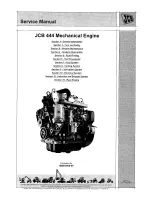
14.2.2
Stop and shutdown
Normal stop is initiated either locally with the stop button, or from a remote control station.
The control devices on the engine are held in stop position for a preset time until the engine
has come to a complete stop. Thereafter the system automatically returns to “ready for start”
state, provided that no start block functions are active, i.e. there is no need for manually
resetting a normal stop.
Manual emergency shutdown is activated with the local emergency stop button, or with a
remote emergency stop located in the engine control room for example.
The engine safety module handles safety shutdowns. Safety shutdowns can be initiated either
independently by the safety module, or executed by the safety module upon a shutdown
request from some other part of the automation system.
Typical shutdown functions are:
●
Lubricating oil pressure low
●
Overspeed
●
Lubricating oil pressure low in reduction gear
Depending on the application it can be possible for the operator to override a shutdown. It is
never possible to override a shutdown due to overspeed or an emergency stop.
Before restart the reason for the shutdown must be thoroughly investigated and rectified.
14.2.3
Speed control
14.2.3.1
Main engines (mechanical propulsion)
The electronic speed control is integrated in the engine automation system.
The remote speed setting from the propulsion control is an analogue 4-20 mA signal. It is also
possible to select an operating mode in which the speed reference can be adjusted with
increase/decrease signals.
The electronic speed control handles load sharing between parallel engines, fuel limiters, and
various other control functions (e.g. ready to open/close clutch, speed filtering). Overload
protection and control of the load increase rate must however be included in the propulsion
control as described in the chapter "Operating ranges".
For single main engines a fuel rack actuator with a mechanical-hydraulic backup governor is
specified. Mechanical back-up can also be specified for twin screw vessels with one engine
per propeller shaft. Mechanical back-up is not an option in installations with two engines
connected to the same reduction gear.
14.2.3.2
Generating sets
The electronic speed control is integrated in the engine automation system.
The load sharing can be based on traditional speed droop, or handled independently by the
speed control units without speed droop. The later load sharing principle is commonly referred
to as isochronous load sharing. With isochronous load sharing there is no need for load
balancing, frequency adjustment, or generator loading/unloading control in the external control
system.
In a speed droop system each individual speed control unit decreases its internal speed
reference when it senses increased load on the generator. Decreased network frequency with
higher system load causes all generators to take on a proportional share of the increased total
load. Engines with the same speed droop and speed reference will share load equally. Loading
and unloading of a generator is accomplished by adjusting the speed reference of the individual
speed control unit. The speed droop is normally 4%, which means that the difference in
frequency between zero load and maximum load is 4%.
Wärtsilä 20 Product Guide - a13 - 6 September 2016
14-7
14. Automation System
Wärtsilä 20 Product Guide
Содержание WARTSILA 20
Страница 1: ...W RTSIL 20 PRODUCT GUIDE...
Страница 34: ...This page intentionally left blank...
Страница 42: ...This page intentionally left blank...
Страница 86: ...This page intentionally left blank...
Страница 92: ...This page intentionally left blank...
Страница 124: ...This page intentionally left blank...
Страница 140: ...This page intentionally left blank...
Страница 154: ...This page intentionally left blank...
Страница 160: ...This page intentionally left blank...
Страница 172: ...This page intentionally left blank...
Страница 175: ......
Страница 176: ......
Страница 177: ......
















































